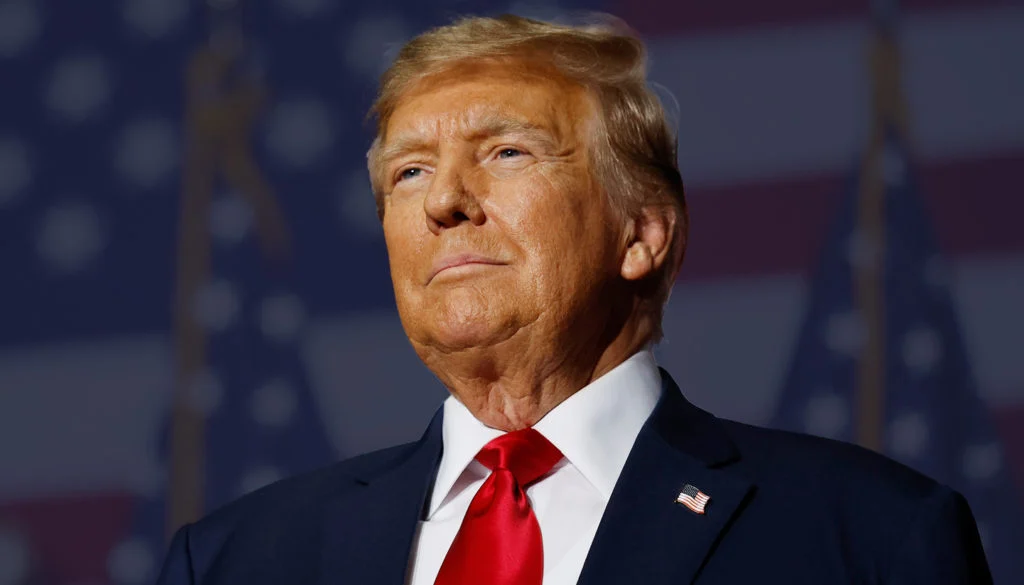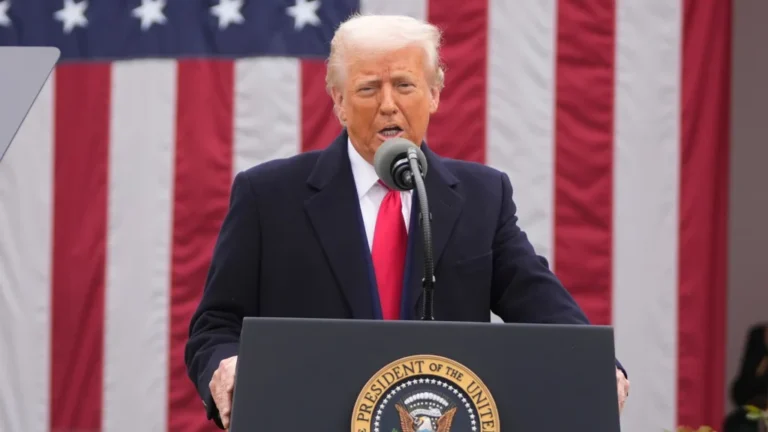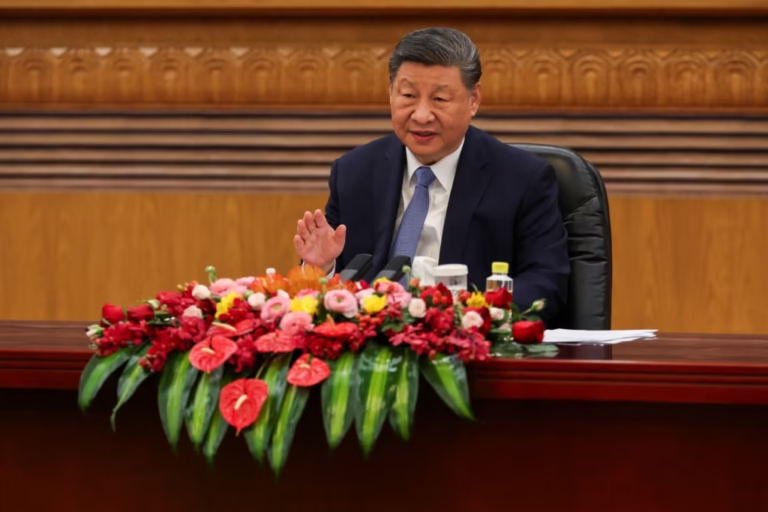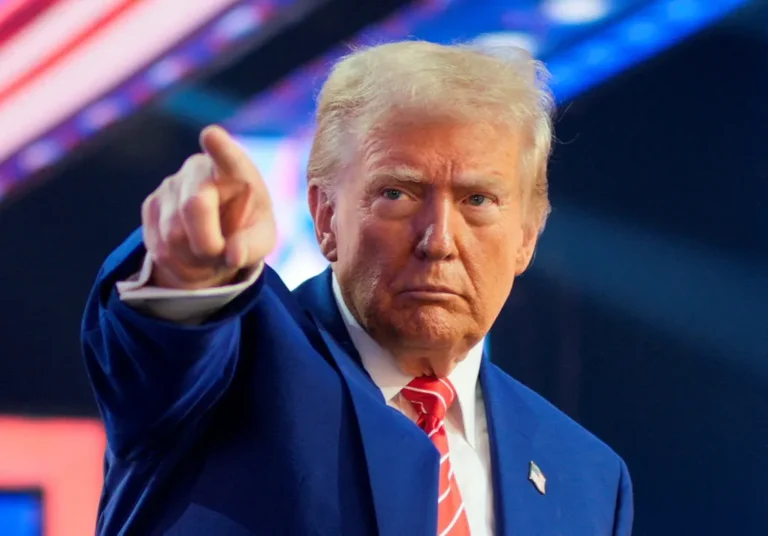
How Much The US Would Be Making A Day In Tariffs Alone According to Donald Trump
Former President Donald Trump is standing firm on his proposal to implement sweeping tariffs on foreign goods entering the United States, a move that has sparked widespread debate and economic concern in recent days. According to Trump, the U.S. could rake in staggering daily revenue from these tariffs if fully enforced.
The announcement has sent ripples through global markets and domestic political circles, reigniting discussions on trade policy, inflation, and the broader implications for international relations.
“Things are heating up,” remarked one economic analyst, summarizing the wave of reactions triggered by the proposed tariffs. Whether you’re watching the news or scrolling through your feed, it’s hard to miss the growing tension surrounding Trump’s aggressive economic strategy.
The former president claims the tariffs would not only level the playing field for American manufacturers but also generate billions in revenue — potentially hundreds of millions per day. However, critics argue the costs could ultimately fall on American consumers and businesses, leading to price hikes and possible trade retaliation.
As speculation builds and reactions pour in from world leaders and economists alike, one thing is clear: Trump’s tariff plan has reignited a fierce debate over America’s role in global trade — and the economic consequences could be enormous.
On April 2 — a date former President Donald Trump has boldly labeled “Liberation Day” — the United States saw the rollout of a new wave of tariffs aimed at reshaping global trade dynamics. The centerpiece of the policy is a 10% baseline tariff on most imports from countries around the world, signaling a dramatic shift in America’s trade posture.
However, some industries were hit even harder. High-priority goods such as automobiles and car parts are now subject to a steep 25% tariff, reflecting Trump’s long-standing push to reduce America’s reliance on foreign manufacturing and boost domestic production.
The sweeping measures mark one of the most aggressive trade stances taken by a U.S. president in modern history, with Trump framing it as a necessary step toward “economic sovereignty.” While supporters praise the move as a bold stand for American jobs and industry, critics warn it could trigger inflation, supply chain disruptions, and retaliation from trade partners.
Not all countries were treated equally under Trump’s sweeping tariff policy. While a standard 10% tariff was broadly applied, some nations faced significantly higher duties — with the European Union receiving a particularly sharp blow.
EU member states were hit with a 20% tariff on their exports to the U.S., drawing immediate backlash from European leaders. In response, the European Commission extended a counterproposal to the former president, offering to eliminate all industrial tariffs between the two powers in a bid to de-escalate tensions and preserve transatlantic trade.
Despite the offer, Trump has so far stood firm on his position, maintaining that the tariffs are necessary to level the playing field and bring manufacturing jobs back to the U.S. As negotiations remain tense, economists warn that escalating tariff wars could damage international trade relationships and weigh heavily on global markets.
The United States appears to be entering a full-scale trade war with China as tensions over tariffs continue to intensify. President Donald Trump has significantly increased tariffs on Chinese imports, with rates now climbing as high as 145% on certain goods.
The move has sent shockwaves through the global economy, particularly within the tech sector. Many consumer electronics—such as smartphones, laptops, and other devices—are assembled in China. Industry experts warn that the steep tariffs could lead to a sharp rise in retail prices. Apple’s iPhone, for instance, could see a substantial price hike, which would directly impact millions of American consumers.
Despite the uproar, Trump remains resolute, asserting that the strategy is a long-term investment in American prosperity. He argues that the tariffs will revitalize domestic manufacturing, reduce the U.S. trade deficit, and ultimately lead to a rebirth of the American industrial sector.
Speaking recently at the White House, Trump doubled down on his tariff initiative, stating:
“If this plan goes into full effect, the United States will be collecting billions of dollars every single day from nations that have taken advantage of our markets for far too long.”
The Chinese government, however, has refused to back down, retaliating with its own tariffs on American exports. As both superpowers remain locked in a tit-for-tat economic battle, analysts warn of potential long-term fallout for global supply chains and rising costs for everyday goods in both countries.
Whether Trump’s bold economic gamble pays off—or sparks lasting damage—remains to be seen.
President Donald Trump is doubling down on his belief that his sweeping tariff policy will ultimately benefit the American people and lead to what he describes as the “rebirth of American industry.”
At a White House press event on Tuesday, April 8, Trump declared that the United States is already seeing major financial gains from the tariffs.
“We’re taking in almost $2 billion a day in tariffs,” he claimed, touting it as a sign of the policy’s success.
Trump went on to say that numerous countries hit with new U.S. import taxes are now scrambling to negotiate more favorable trade terms.
“These countries are calling me up, kissing my a**… they are dying to make a deal,” he remarked, with characteristic bluntness.
He even took the opportunity to mock foreign leaders, mimicking their supposed pleas to strike a deal:
“‘Please, please, sir, make a deal. I’ll do anything.’”
Despite mounting criticism over the potential rise in consumer prices—especially in the tech and automotive sectors—Trump maintained that the tariffs are a strategic win.
“I really think we are helped by the tariff situation that is going on, which is a good situation—not bad—it’s great,” he concluded.
The comments underscore Trump’s confidence in using economic pressure as a tool for reshaping global trade, even as backlash grows both at home and abroad.
Trump Says His Tariff Strategy Will Be ‘Legendary,’ Imposes 104% Tariff on Chinese Goods
Former President Donald Trump is showing no signs of backing down in the escalating trade tensions with China. At a recent White House event, he declared that his economic measures are not only bold but historic.
“It is going to be legendary—you watch—legendary in a positive way, I have to say,” Trump stated confidently.
As part of his ongoing effort to pressure China into new trade negotiations, Trump announced that effective midnight on April 8, additional tariffs would be enforced, bringing the total levy on Chinese imports to 104%.
“That is why additional tariffs on Chinese goods are in place… until they make a deal with us—that is what it’s going to be,” he explained.
Trump had issued China a deadline earlier that day to remove its retaliatory tariffs, warning that failure to comply would result in harsher economic consequences. While expressing optimism that China would eventually return to the negotiating table, he also acknowledged the challenge:
“I think they’ll make a deal at some point. China wants to make a deal, they really do—they just don’t know how to get it started because they are proud people.”
However, China refused to yield by the deadline, prompting Trump to escalate the situation further. On April 10, he reportedly imposed a 145% tariff on all Chinese goods entering the United States, according to The Independent.
The intensifying trade war is already sending shockwaves through global markets, particularly affecting industries heavily reliant on Chinese manufacturing, such as electronics and automotive sectors. Still, Trump remains firm in his belief that these aggressive tactics will ultimately serve the American economy.









